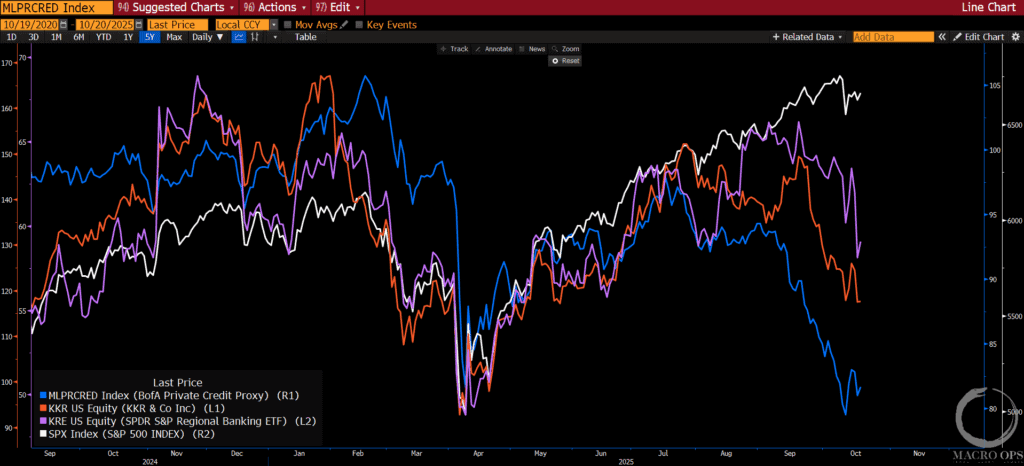Herd mentality, as defined by Herbet Simon in the journal article The Concept of Herd Behavior: Its Psychological and Neural Underpinnings is , “An alignment of thoughts or behaviors of individuals in a group … such convergence emerges through local interactions among agents rather than some purposeful coordination by a central authority or leading figure in the group.”
Sheep, buffalo or middle-aged women at Lululemon. We see herd mentality everywhere. In this section, we’ll discover the physiological mechanisms of herd mentality, cover Solomon Asch’s powerful experiment, and discuss how we can apply Asch’s findings to our own Investment Process. Once finished, you’ll be able to add a new mental model to your lattice-work toolbelt.
Herd Mentality in Humans
Humans don’t herd because we decided it would be fun. It’s how we survived. We are, after all, the most advanced species on the planet. But we weren’t always like that.
Our hominid ancestors utilized herding to pass their genes to the next generation. For example, if a lion’s chasing you, it makes sense to run as a pack and play the numbers game.
Moreover, the journal offers ideas about how herding arises on a physiological level. A first-principles level, if you will. By understanding how we herd, we can better apply these principles to other disciplines (investing, life, relationships, etc.).
Mechanisms of Herding
According to the journal article, herding mechanics fall into three buckets:
-
- Emotional Contagion, Facial Mimicry, and Mirror Neurons
- Social Norms, Shared Stories, and Mutual Expectations
- Information Cascades
Let’s dive in.
Emotional Contagion, Facial Mimicry and Mirror Neurons
Humans are like chameleons when it comes to showing emotions. Emotional contagion is the act of reflecting someone’s emotional state upon ones-self. It’s ingrained into our physiology. For example, infants begin mimicking emotions by day 21. To help us explain this phenomenon we need to go microscopic, we need to look at neurons.
Mirror neurons are the fundamental building blocks of mimicry and emotional contagion. Coined by Italian neurophysiologist Giacomo Rizzolatti, this neuron is what makes us social creatures. In fact, this gene goes so far back we can study it in chimps.
In his research, Rizzolatti revealed, “[the neurons] fired both when an animal acted and when the animal observed the same action performed by another.”
Moreover, Rizzolatti explained that, “The same neurons fired when the monkey grasped something with its hand, and when the monkey observed the experimenter grasping it.”
Neuroscientist at the University of California, Marco Iacoboni, used smiling to explain mirror neurons:
“When I see you smiling, my mirror neurons for smiling fire up, too, initiating a cascade of neural activity that evokes the feeling we typically associate with a smile. I don’t need to make an inference on what you are feeling, I experience immediately and effortlessly what you are experiencing.”
This is significant for two reasons:
-
- It proves that it’s easy for us to mimic others’ emotions and in turn show them ourselves.
- Beyond showing the emotions of others, we end up feeling the same as they do.
The Dangers of Herd Mentality
It turns out mirror neurons impact every aspect of how we interact with others. Even how we process information.
Suppose you spend all day reading headlines of an impending market crash. You check Twitter and voila, the yield curve inverted! Reading other investors’ reactions can pull you towards an altered state of thinking. Mirrored thinking, or their thinking. When the neurons fire, you become preoccupied with processing others’ opinions. You even start feeling those emotions on a biological level. You become trapped in your own neurological web.
We see the same activity occur in individual stocks too. A hedge fund hotel is a collection of fund managers with mirror neurons firing in agreement. Short squeezes experience similar neurological mechanics. The first sellers cover, which triggers more sellers to cover, you get the picture.
Thinking with a mirror neuron framework provides us with a lens at which to view human interaction in financial markets in a brighter light. We know where sell-offs and bull-runs start: at the biological level.
Social Norms, Mutual Expectations, and Shared Stories
Social norms exist for a reason. They help us gain and keep friends, garner respect in our communities, and stay within the bounds of ‘rational behavior’. We use mutual expectations and shared stories to develop and grow these social norms. Yet, even though social norms benefit society, they don’t help us profit in financial markets.
To understand social norms and its influence on our decision-making, we must first understand docility. Docility, according to Simon, is our, “tendency to depend on others’ suggestions, recommendations, persuasion and information obtained through social channels as a major basis of choice.”
Simon argues that in honoring social norms, we tend to seek out what’s popular amongst the masses. Once we learn what’s popular, we adopt that thing into our standard of being. It becomes our social norm. This has devastating effects when it comes to investing and financial markets.
The Power of News
There are no shortages of opinions on Financial Twitter (or as the cool kids call it, FinTwit). Have an idea you’ve been volleying in your mind? Shoot it out to the FinTwit masses and watch the piranhas attack.
Twitter is a great way to ‘red-team’ a thesis. But if you’re not careful you’ll enter an echo-chamber of confirmation bias. Even worse, your idea might be so unpopular that you throw it out for the sake of becoming a social pariah.
Financial news outlets — *cough cough* CNBC — fight every day to prey on your docility-space. They want you to adopt their expectations, share their stories. It’s easy to fall into thinking that what they’re saying matters. After all, they do have flashing headlines and “Breaking News” segments. These channels abuse our innate desire to connect with stories. To share in narratives.
When Stories Become Hindrances
In a similar vein, we leverage stories (narratives) to explain any and every phenomenon. We’re pattern-recognition creatures, and most of our heuristics trace back to our African ancestors. These narratives do more than guide our minds during events in which we have no prior experience. It’s deeper than that. Narratives give us comfort.
Yet its this desire for comfort that harms us the most when we’re investing in public/private markets.
Start-up companies pitch narratives about what the future will hold — even if they can’t yet show it in profits. Venture Capital funds fire-hose cash into these narratives. And who can blame them? It’s ingrained into our most basic genetic fabric. We love a good story.
The problem is that this behavior is value destructive. Our desire for a great story saps investment from good (albeit monotonous) ideas into high-flying stories about the world to come.
Given where we are in the cycle, it’s not surprising that people want to invest in a money-losing company with a great narrative over a cash-gushing business with a boring narrative. Boring businesses don’t make interesting stories for the 24-hour news cycles.
Stories become hindrances when they prevent us from making rational, reasonable investment decisions.
Information Cascades
Information cascades are like avalanches. Not only in that they’re the culmination of the previous examples, but also in their destruction. All it takes is one silent tremor to send life-threatening reverberations further down. Hyperbolic bull runs and manic bear markets feed on information cascades. Even worse, the information doesn’t even need to be correct for the cascade to work!
Let’s take an example from Simon’s journal article on the academic peer-review process.
Peer-reviewed journal articles go through many rounds of approval from fellow academics. Get enough positive remarks on your paper and you’ve got a spot in your industry’s publication.
But what happens if the first peer leaves a poor review?
That decision, the first decision, sends information down to each subsequent reviewer of the paper. Whoever reviews the paper first will influence the opinions of each incremental set of eyes. That’s a lot of responsibility.
Intuitively this makes sense. If you receive a paper for review that has “rejected” on the front page, it subconsciously changes the way you view the paper. All this happens before you read a single word!
That’s the power of information cascades.
The same thing happens with stocks. One person starts selling, which causes another person to sell, which leads to another person to sell … You get the picture. Information cascades happen fast and they take no prisoners. What’s a ‘Greater Fools Theory’ other than an elongated information cascade to the upside?
As we’ll see next, information cascades lead us to act in abnormal, even irrational ways.
The Solomon Asch Experiment
Solomon Asch was one of the most influential social psychologists of the 20th century. Born in Poland, Asch’s professional work focused on social influences, conformity and impression theory. Yet it’s one experiment in particular that cemented his legacy:
Measuring lines (see photo above).
The results of this study impact the very essence of what it means to be a stock market participant.
Questions such as, ‘Do you have what it takes to be a contrarian?’ have meaning. The old adage, ‘contrarianism can’t be taught’ has validity. Things we didn’t think measurable, Asch translated into data.
We’ll provide an overview of the experiment, its results and how we can apply those results to our investment process. Another mental model to add to the toolbelt!
Solomon Asch Experiment Summary
Asch’s goal for the experiment was to “study the social and personal conditions that induce individuals to resist or to yield to group pressures when the latter are perceived to be contrary to fact.”
Asch believed it was “decisive fact” individuals are born with either the tendency to conform or to act independent. Famous value investor Seth Klarman ascribes to similar beliefs. He’s well known for believing contrarianism isn’t something one can learn.
The set-up was simple: one individual and one group of eight people. Both tasked with matching the length of a given line to one of three unequal lines. Asch then employed a control group. This group would write their answers on a piece of paper instead of saying them out loud and in front of a group.
Here’s where the experiment proves potent. Instructed by Asch, the group would unanimously go against the judgement of the individual. If the individual thought the line was 1 inch, the group argued it was 1 ½ inches.
In his words, Asch wanted to know the “grounds of the subject’s independence or yielding … whether he abandoned his judgment deliberately or compulsively.”
In essence, Asch was studying contrarianism at its psychological foundation.
Solomon Asch Experiment Results
The results of the experiment were, to quote Asch, “clear and unambiguous.” The data backs this up (screenshot shown above from Asch’s journal article):
Observing the data we notice a pull towards the majority. One-third of critical errors made by the individual were either identical to or within the direction of the majority’s incorrect guess.
Phrasing it another way, our thinking is very much swayed by groups.
Things get even more remarkable when you compare the control group results. Nearly 95% of the control group had zero critical errors.
These results weren’t binary, however. Distributions emerged between those that remained confident and those that caved under groupthink.
Asch broke the distribution into two quadrants: independents and yielders.
Independents were confident people, as one would assume. Yet they had a great feel for knowing they didn’t know everything. They were fallible. For example, one of the Independent subjects claimed, “I would follow my own view, though part of my reason would tell me that I might be wrong.”
Asch noted that Independents were generally, “resilient in coping with opposition, … relied on their own perception and effective at shaking off oppressive group opposition.” Sounds like the required mantra when bag holding a contrarian position, right?
Yielders, Asch concluded, lacked confidence and appeared nervous when challenged by the group. One of the yielding subjects explained that, “If they (the group) had been doubtful I probably would have changed [my answer], but they answered with such confidence.”
That last part is key: “but they answered with such confidence.” Excess confidence (especially in financial markets) gets you killed.
Using Asch’s Results to Improve Investment Process
Before implementing this new model into our process, we need to ask ourselves:
What type of investor am I? A yielder or an Independent?
You might be a Yielder if:
-
-
- You find yourself seeking confirming evidence on your existing holdings.
- Sell at the slightest chance your opinion is unpopular.
- Only invest in “trending” stocks.
- Fail to do proper due diligence on your investments.
-
What should you do if you found yourself muttering, “damn, I do almost all of those things!”? Below are three ways that helped me turn yielding into independence.
1. Spend more time analyzing a business.
Yielders have confidence issues. They wonder if others think their Axe body spray smells nice. Even worse, they lack conviction in their investments.
One way to reduce a lack of confidence is through deep diligence into one’s holdings. Don’t get me wrong, there will always be unknown unknowns. Yet understanding a business on a deeper level enables you to withstand the inevitable drawdowns.
If you really understand a business, you’ll know the difference between a fire sale and an actual fire. You’ll know if a 30% drop screams “buy!!!” or if it screams “GET TO THE CHOPPA!”
2. Buy illiquid stocks
Want to kick-start your ability to generate confidence and conviction? Buy shares of very illiquid companies. Illiquid stocks force you to think more like a business owner.
There are two factors that allow this.
First, there isn’t much public information out on some of the smaller, more illiquid names. This requires you to dive deeper and investigate like a real business owner. You can’t just pull up the latest analyst report.
Second, you can’t move in and out of illiquid positions with ease — hence the name, illiquid. It takes a while to build a position, and as long to unwind the position. Selling an entire position at once could turn you from investor to market-maker. Doing this ruins your chances of getting the price you want.
Because of these factors, your time-frame shifts from short-term to long-term, if nothing else for the sake of cost basis.
3. Protect Your Downside
It’s easy to be a Yielder when you’re frightened of losing your skin on an investment. But it doesn’t have to be that way. The margin of safety principle applies to your confidence levels. If you’re betting the farm and sport a risk-averse personality, of course, you’re going to yield at the slightest chance of being wrong. This is where downside protection comes in.
Downside protection manifests in various forms. It could be cash on the balance sheet. You could buy at less than liquidation value. On top of these, you could use stop-losses, which literally cap your losses.
Beyond these more quantitative measures, confidence is easier to keep if you’re investing with a high margin of safety. If you can be wrong and still make money, it’s easier to sleep. There’s nothing better than investing in a net-cash business where even if you’re dead wrong about the future, you can still make money.
What to watch if you’re an Independent
One would assume that it’s better to be an Independent than a Yielder. And while that is true in theory, it doesn’t mean Independents skate through without issues. In fact, if left unattended, Independents could lose significantly more sums of money than their yielding counter-parts.
Here are two red flags to watch if you’re Asch’s Independent:
1. You discount any opinion / news contrary to your current thesis.
Confidence can manifest into arrogance. Where yielders struggled to hold any conviction, Independents can’t think of a world where they’re wrong. All their models are the truth, and their EBITDA multiple is without error. This isn’t optimal and can lead to portfolio destruction.
Cure: Read short theses on your longs, and try to keep an open mind. You can be wrong.
2. You refuse to sell because ‘I’m right and it’s going back up.”
Nothing’s guaranteed in financial markets — and it goes for valuations too. That a company is cheap doesn’t mean the stock price will ever reflect that intrinsic value.
John Meynerd Keynes said it best, “Markets can remain irrational longer than you can remain solvent.” Sometimes the market doesn’t reward your idea on your desired time frame … or at all for that matter.
Cure: Be okay with selling. There are other opportunities out there. Don’t get hung up on the one that didn’t work.
_______________________________________________










